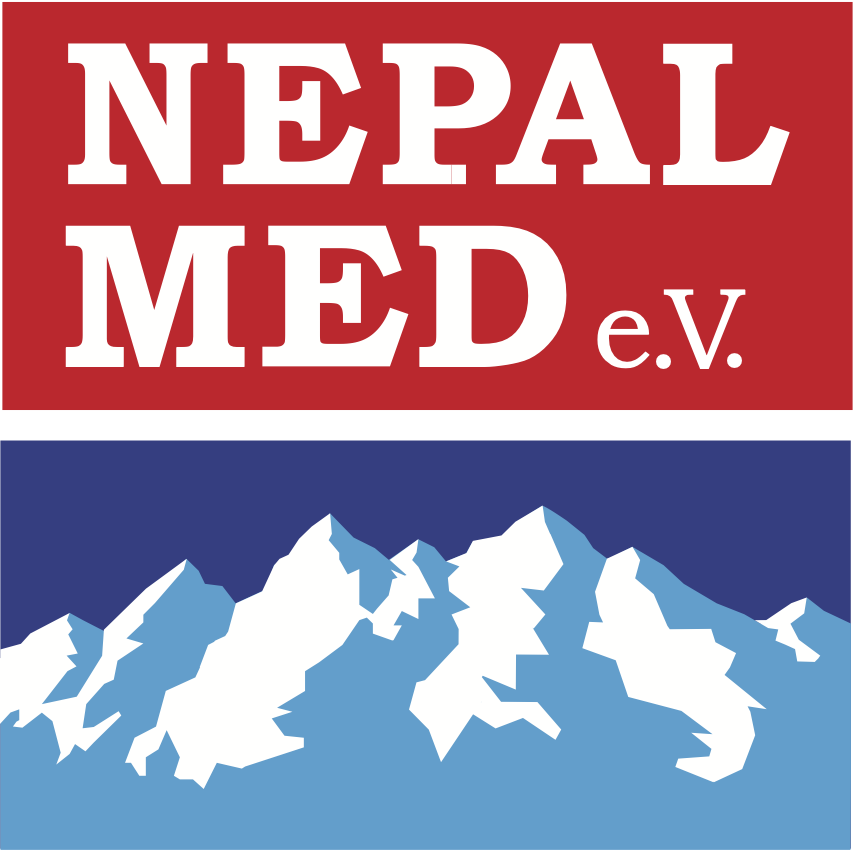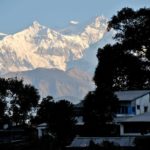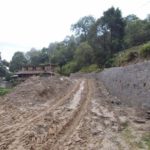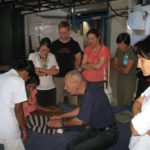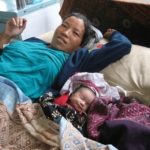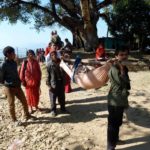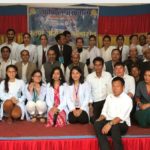Amppipal Hospital
Hospital facts
Address: Amppipal Hospital, Palungtar Municipality – 11, Gorkha, Nepal, Tel: 00977-9846-208709.
Amppipal Government Hospital is run by a local committee. The district government’s plan is for 14 beds, but in fact, 46 beds are maintained due to high demand. In Gorkha district, there are only two hospitals for 350,000 inhabitants: Amppipal and Gorkha. The budget of Amppipal Hospital is mainly composed of income from treatment and donations from Nepalmed. An unpredictable, small portion comes from the Ministry of Health of the Nepalese government. The community of Amppipal also makes a small, varying contribution. Similarly, the North American aid organization “United Mission to Nepal” contributes financially to the hospital pharmacy.
Every day, 55 -110 patients come to Amppipal Hospital for treatment. Most of the patients have internal diseases like asthma, chronic bronchitis, diarrhea, typhoid, worms, fever, infections. Alcoholism and depression are also common. The hospital provides outpatient and inpatient care to all patients. Family planning, prenatal and postnatal care, and immunization programs are provided. Vaccines for children are provided free of charge. A video program on various health education topics runs in the waiting area during office hours.

Geographical position
Amppipal is a small village and is located in the middle mountainous region of Nepal in the southwestern part of Gorkha district in the Western Region or Gandaki Zone of Nepal at the foot of the main range of the Himalayan Mountains. Several hundred thousand inhabitants live in the surrounding districts. The hospital is located on a mountain above the Chepe River at an altitude of 1,020 meters above sea level with a magnificent view of the snow-capped mountains of the Annapurna Range and Manaslu Himal.
In the district of Gorkha and the surrounding areas, Amppipal is currently the only place with regular, surgical treatment facilities. The majority of patients come from the districts of Gorkha, Lamjung and Tanahun with walking distances or walking times usually ranging from half an hour to more than 12 hours. However, patients also come from up to three days’ walk away.

OPERATION OF THE HOUSE 1969 – 2001
The Amppipal Hospital was built in 1969 by the organisation “United Mission to Nepal”. It replaced an old pharmacy, which had been responsible for providing medical care to the population there for 12 years. In September 2001, “United Mission” stopped its work in Amppipal. The American physician Dr. Thomas Hale reports about the conditions at that time in his book “Don’t Let the Goats Eat the Loquat Trees” (Zondervan, Michigan, 1986).
In April 1997, Amppipal Hospital became the first hospital in Nepal to start “DOTS” treatment for tuberculosis. “DOTS” stands for Directly Observed Therapy, Short Course. The main objective of the treatment and the accompanying program is direct contact between the patients and the doctor to ensure that the medication is taken regularly and to monitor the progress of the therapy and recovery.
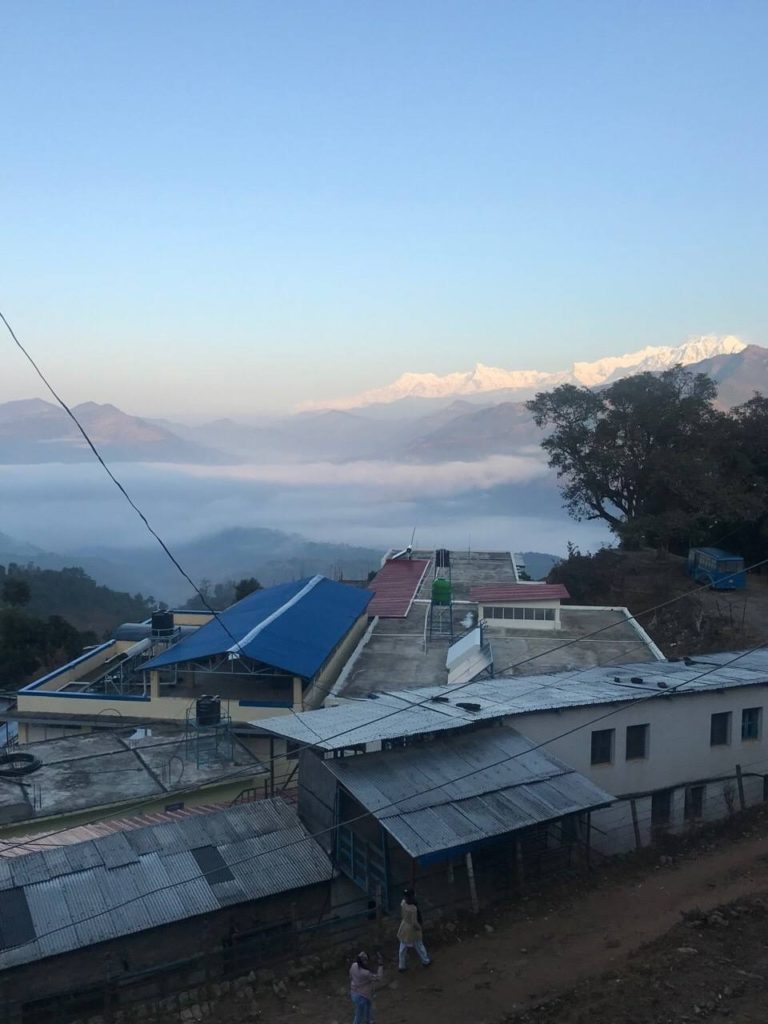
OPERATION OF THE HOUSE 2001 – TODAY
The German surgeon Dr. Wolfhard Starke was the doctor on site and at the same time hospital director from 2003 to 2012. He was awarded the Order of Merit of the Federal Republic of Germany for his many years of service. Since the end of 2012, there has been a cooperation with the Patan Academy of Health Sciences (PAHS), which provided an experienced Nepalese physician, Dr. Kshitiz Paudel, whose salary is largely financed by Nepalmed. Through the cooperation with PAHS, Amppipal Hospital has advanced to a teaching hospital. PAHS sends junior doctors and medical students to Amppipal for internships. Since 2012, specialized doctors from Germany have also been on site on a rotating basis to train and educate the local staff.
Numerous infrastructure projects have been realized with donations. In 2005, a 2 km long connecting road was built between the village of Amppipal and the hospital. Two all-terrain ambulances and two transport jeeps are now available. In 2017, an agreement was reached with Palungtar Municipality to extend a 3.8 km access road to the hospital from the main road towards Tati Pokhari (cost: municipality 70%, Nepalmed 30%). A bus with 24 seats for patient transport was purchased.
Help through Nepalmed e.V.
Nepalmed e.V. has been continuously supported Amppipal Hospital financially and by sending specialists 2003 – 2024. Part of the money was used to purchase urgently needed medical equipment and another part was used to help very poor patients to finance urgently needed treatment including operations through the “Nepalmed Fund”. Training was made possible for several hospital staff members, including hospital management training for the administrator. The majority of the donations were used for the maintenance and expansion of the local infrastructure and for the development of the hospital staff.
Donations were continuously used to plan and finance the maintenance and construction of new buildings (office in 2005, guest house in 2007, operating room, women’s ward and delivery room in 2012), construction of a waste disposal site, waste incineration plant, and access roads. The German Embassy Kathmandu has financed a waste incineration plant and a solar water heating system as part of its support for small projects. Due to the unreliable supply of electricity from the external grid, a battery bank system was installed for the most important parts of the hospital and photovoltaics were installed for numerous buildings. In 2017, a nurses’ home financed by genialsozial was handed over.
After the devastating earthquakes of 2015, Nepalmed provided immediate financial aid for the reconstruction of houses in the surrounding communities and covered parts of the costs for the repair of earthquake damage to buildings of the hospital.
Since 2024, the hospital has been operating without further support from Nepalmed. We are proud to have laid the groundwork for successful development with 20 years of support.
Detailed information can be found in the annual reports.
